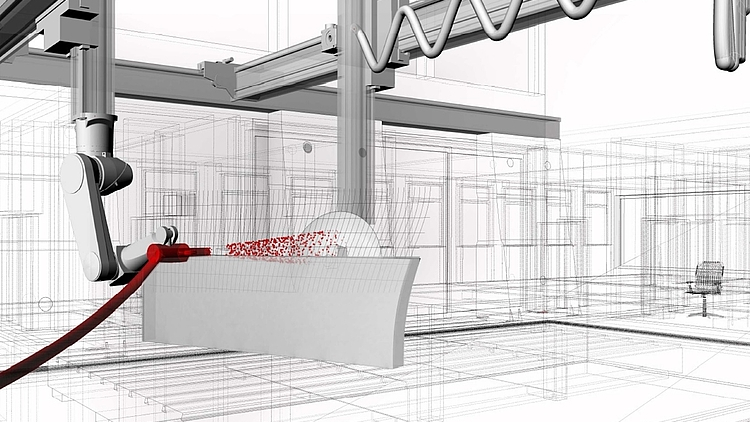Generative Manufacturing in Construction

| E-Mail: | raatz@match.uni-hannover.de |
| Team: | Serhat Ibrahim |
| Year: | 2016 |
| Funding: | MWK |
| Is Finished: | yes |
While in industrial manufacturing the current discussions about future developments are determined by the topics "Industry 4.0", i. e. the networking of production techniques and processes to form a so-called "Smart Factory", as well as the "human-robot cooperation", the construction industry has not even arrived in Industry 3.0. Although the digital revolution took place in the construction planning offices in the form of powerful design, calculation, construction and simulation programs, the high-quality materials and industrially manufactured semi-finished products are still placed on top of each other on the construction site or welded "seam-by-seam" together with the disadvantage of large losses in quality and cost-intensive work processes. The discrepancy between what we handle in the digital planning world in terms of complexity and how we can implement it in the real world in terms of construction has steadily increased over the past few years.
In Germany, most of the buildings are built using the solid construction method, and concrete plays a central role here. Concrete technology has undergone enormous developments in recent years. With the ultra-high strength concretes (UHPC), which are self-compacting and thus theoretically capable of flowing into any form, we have a high-performance material for resource-efficient components. However, the standards of the system formwork manufacturers continue to dominate in the practical implementation of the system with their flat formwork systems for the production of geometrically simple, flat components such as slabs, walls and columns. Even a conically tapered support is not possible with these systems without extensive individual adaptation.
This is where the research project "Generative Manufacturing in Construction" comes in. The aim is to develop a process for the production of geometrically complex components with a perspective graduated layer structure that meets the performance capability of the material. A decisive and innovative approach is to completely dispense with the limitation of the form by the previously necessary formwork. The idea is to make use of the manual method of injection moulding technology known from tunnel construction and to further develop it into an industrial, formwork-free manufacturing process. The complex production process of formless concrete components is to be carried out in a robot-supported generative process.
Relevant work on generative manufacturing and the corresponding design technology show the necessary inter- and transdisciplinarity to achieve decisive progress. The present project consciously takes this step and dares to go beyond the boundaries of established production areas. The transdisciplinary research project aims to combine knowledge from the fields of mechanical engineering, computer science and materials science with that of construction. This requires the researchers involved to have individually high levels of expertise in the respective subject area, which is why a joint project between the three participating universities with their respective focal points City of the Future (TU BS), Structural Engineering (TU BS), Production Engineering (LUH) and Resources (TU Clausthal) creates ideal conditions.
At the match in particular, potential ways of generating motion for robot control are being investigated. This process is still carried out 100% manually by the tool operator. In order to achieve the desired component qualities, this person must be particularly experienced in this field. In order to be able to represent this knowledge on the control system, it is therefore necessary to bundle the respective partner competences in such a way that they are bundled. In order to achieve this, the robot controller must be coupled with the control of the injection moulding tool and various external optical measuring systems.




















